LATEST MORBIDITY
AND
MORTALITY STATISTICS
ON BYPASS SURGERY
AND
ANGIOPLASTY
Excerpts from Living Longer With Heart Disease:
The Noninvasive Approach That Will Save Your Life
http://www.heartprotect.com
With the exception of the first report in the next paragraph, the following series of reports are presented in chronological order. A common method of describing results is either mortality or freedom from a cardiovascular event such as death, heart attack, stroke or repeat bypass surgery or angioplasty. Mortality figures are presented in a variety of formats such as 3, 5, and 10 year mortality, and so are cardiovascular events. I have modified these figures so that they are on a yearly basis to make comparison easier. The first report (reference 17) is presented out of order because it not only shows the most recent statistics, but it also reflects outcomes in one of the largest group of patients to date.
From a multicenter study (17) from several major medical centers, using
In 17, 857 patients with disease of all three coronary arteries who underwent coronary artery bypass surgery, the annual mortality rate was 3.3 %. In 1,294 patients with three vessel disease who underwent coronary angioplasty the annual mortality rate was 4.2 %.
In 9,212 patients with two vessel disease undergoing coronary artery bypass surgery, the annual mortality rate was 2.7 %. In 7,405 patients with two vessel disease undergoing coronary angioplasty the annual mortality rate was 2.3 %.
For mortality related to age, see the National Medicare Experience below.
Dr. Salem Yusuf reviewed the medical literature from 1972 to 1984 and compared the mortality of medical and surgical treatment. (18) There were four studies involving a total of 416 patients. At 10 years the mortality of the surgically treated patients was 33% or 3.3% per year. The mortality of the medically treated patients at 10 years was 34% or 3.4% per year. It is to be noted that this reflects the medical treatment primarily of the Seventies.
Dr. Spencer King of
In a study of mortality rates in different age groups in Medicare patients undergoing either bypass surgery or angioplasty, Dr. Eric Peterson and his associates at
THE NATIONAL MEDICARE EXPERIENCE
|
| Mortality After Angioplasty |
| Mortality After Bypass Surgery | ||
| Ages | 30 Day | 1 Year | | 30 Day | 1 Year |
|
| % | % |
| % | % |
|
| |||||
| 65-69 | 2.1 | 5.2 |
| 4.3 | 8.0 |
| 70-74 | 3.0 | 7.3 |
| 5.7 | 10.9 |
| 75-79 | 4.6 | 10.9 |
| 7.4 | 14.2 |
| >80 | 7.8 | 17.3 |
| 10.6 | 19.5 |
Obviously, mortality rate is related to age. Unfortunately, rarely are these figures quoted to elderly patients when they are urged to undergo these procedures.
In a study of 591 patients from nine medical centers in
From the
Another interesting study was the CAVEAT Trial (Coronary Angioplasty Versus Excisional Atherectomy Trial).(23) Atherectomy refers to the use of a rotor rooter type of device that is inserted into a coronary artery and the arteriosclerotic plaque is cut up and scooped out. In this study only the frequency of a myocardial infarction (heart attack) was studied in 500 patients undergoing angioplasty and 512 having atherectomy. The incidence of myocardial infarction in the atherectomy patients was 15.2% and it was 6.8 % in the angioplasty patients. The high incidence of heart attacks with both groups was because cardiac enzymes were measured rather than merely getting an electrocardiogram after the procedure. Thus, the reported incidence of myocardial infarction after these procedures is artificially low because insensitive methods of detection are being used.
Another report dealing with mortality rate in elderly patients undergoing cardiac surgery is from
From the
From the National Registry of Myocardial Infarction in 3,648 patients undergoing angioplasty who had this procedure done initially as the primary treatment, the in-hospital mortality for patients who were treated under one hour was 6.9%, from 1-2 hours 5.7%, from 2-3 hours 9.1%, and after three hours 9.4%. (26) These are not small numbers. In my experience the mortality rate of a heart attack patient after he or she reaches the hospital is excellent. There is a better than 95% chance of recovery, even better if the patient gets to the hospital early. Thus, the mortality rate for patients treated with angioplasty in this study is twice as great as with conservative medical treatment. A recent Veterans Administration Study showed similar findings in a group of 500 patients with an acute heart attack. There were 21 patients who died in the surgery or angioplasty treated group at nine days, but only six patients who died in the medically treated group in this time period.
Looking at mortality figures alone doesn't tell the complete story. Perhaps a better way to evaluate the outcome of these procedures is to combine all cardiovascular events including death on an annual basis. It is known, for example, the after angioplasty, the coronary artery that was dilated will usually become narrowed again and may close off. The frequency with which this happens is about 50%. How often this will result in repeat symptoms is not precisely known. The following reports describes recurrences of cardiovascular events including death, heart attack, unstable angina, repeat angioplasty and coronary artery bypass surgery.
From the
From the
In the
In a 10 year study from St. Antonius Hospital in the
From the
From the
From the
In a comparison of medical treatment versus angioplasty for patients with stable coronary artery disease, 20 centers from the
In a recent Veterans Administration study known as the VANQWISH trial 920 patients from 15 medical centers with an acute heart attack were randomized to treatment with revascularization (angioplasty or coronary artery bypass surgery) or conservative medical treatment. At the time of discharge from the hospital, 21 patients who had undergone revascularization had died versus only six medically treated patients. At 2.5 years there were 80 deaths in the aggressively treated group versus only 59 deaths in the conservatively treated patients.
There are only a few reports dealing with the use of stents placed within a coronary artery. A stent is a metal tube that can be expanded when placed within a coronary artery. When fully expanded it becomes a scaffolding that helps to keep the artery from closing. Typically, when an artery is dilated with balloon angioplasty, a delayed complication is collapse of the walls of the blood vessel causing the artery to become blocked. Stents were developed to prevent this from happening. This it does, however, although the vessel walls stay apart, the inside of the stent becomes filled with tissue that grows into the stent. Thus, stents often become occluded and the vessel still closes off.
From
From the Cardiovascular Division of the
From the
|
| 1 Month | 6 Months | 1 Year | 2 Years | 3 Years |
| All Cardiac Events | 13% | 22% | 34% | 42% | 51% |
| Cardiac Mortality | 4% | 5% | 6% | 7% | 9% |
| Total Mortality | 5% | 6% | 9% | 10% | 13% |
| Repeat Angioplasty |
| 20% | 23% | 25% | 31% |







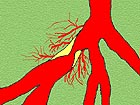
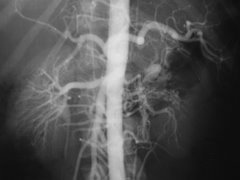
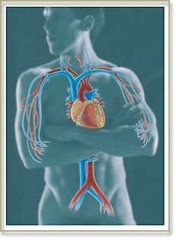
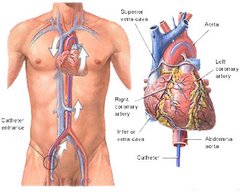
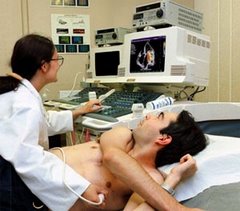
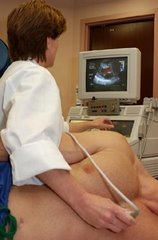
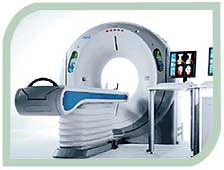
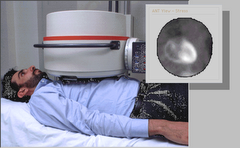
No comments:
Post a Comment